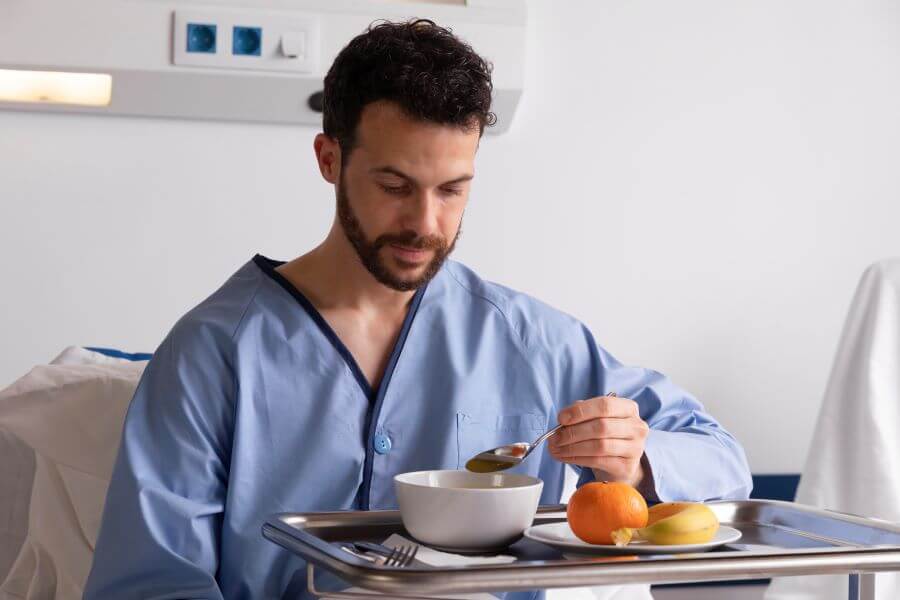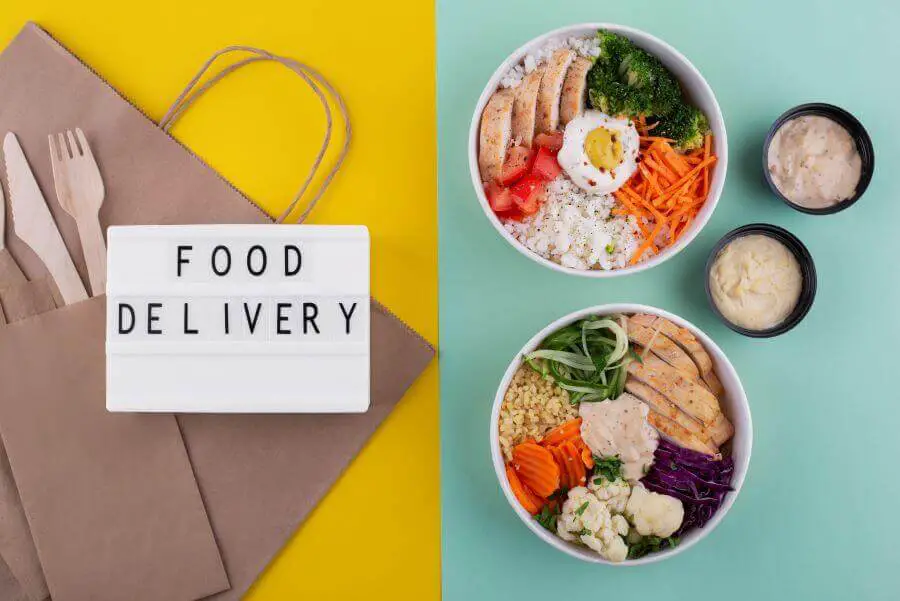Regarding hospital visits, it is natural for patients and their loved ones to ask what is permissible regarding food and beverages. One common query is whether it is allowed to bring McDonald’s or other outside food into the hospital.

This article aims to comprehensively understand the factors in bringing outside food into a hospital setting.
Hospital Food Policies and Patient Safety
- Ensuring Patient Safety and Health: Hospital food policies primarily promote patient safety and health. These policies are designed to prevent potential risks associated with outside food, such as contamination, foodborne illnesses, and allergic reactions. Hospitals strive to create an environment that supports the well-being of patients and minimizes any adverse effects that may arise from incompatible foods.
- The Role of Hospital Dietary Services: Hospitals typically have their own dietary services departments responsible for providing tailored meals to meet the nutritional needs of patients. These departments work closely with medical professionals to ensure patients receive appropriate diets based on their medical conditions, medications, and treatment plans. The goal is to optimize patient recovery and enhance overall well-being through proper nutrition.
Dietary Restrictions and Medical Considerations
- Tailoring Diets to Medical Conditions: Hospitalized patients often have specific dietary restrictions due to their medical conditions. For example, individuals with diabetes may require controlled carbohydrate intake, while those with kidney disease may need to limit protein and sodium consumption. Incompatible foods brought from outside can interfere with these specialized diets and pose risks to patient health.
- Potential Risks of Incompatible Foods: Incompatible foods can negatively impact patient health and treatment outcomes. Certain medications, procedures, or medical conditions may require patients to avoid certain foods or beverages to prevent adverse reactions or interference with prescribed treatments. Bringing outside food, including McDonald’s, without considering these factors could compromise patient safety and recovery.
Hygiene and Infection Control
- Preventing Contamination and Allergen Exposure: Hospitals maintain strict hygiene and infection control protocols to minimize the risk of contamination and allergen exposure. Outside food, especially from fast-food establishments like McDonald’s, may adhere to different stringent standards than hospital-prepared meals. This increases the likelihood of introducing pathogens, allergens, or cross-contamination into the hospital environment, jeopardizing the health of patients, staff, and visitors.
- Hospital Environment and Patient Well-being: Hospitals strive to create a conducive environment for patient healing and well-being. Strong odors, grease, and food residue from outside sources can affect air quality and cleanliness. Additionally, outside food may disrupt the established meal schedules, impacting patients with dietary restrictions or those undergoing specific treatments.
Interactions with Medical Treatment
- Dietary Interference with Treatments: Certain medical treatments, such as surgeries, chemotherapy, or specific medications, may require patients to adhere to strict nutritional guidelines. These guidelines are put in place to ensure optimal treatment outcomes and minimize complications. Outside food, including fast food options like McDonald’s, may contain ingredients or nutrients that can interfere with the efficacy of these treatments, potentially compromising patient health.
- Importance of Coordinated Care: Healthcare professionals coordinate patient treatment plans to provide holistic care. This includes aligning dietary requirements with prescribed medications and therapies. Bringing outside food into the hospital without consulting the medical team can hinder coordinated care efforts and may lead to unintended consequences.

Patient and Visitor Comfort
- Balancing Medical Needs and Comfort: While hospitals prioritize patient safety, they also recognize the importance of patient and visitor comfort. In some cases, patients may have specific dietary preferences or cravings that are not directly related to their medical conditions. Balancing medical compliance and patient satisfaction can be delicate, requiring effective communication and collaboration between patients, visitors, and healthcare providers.
- Designated Areas for Outside Food: Some hospitals may have designated areas where outside food can be consumed to accommodate patient and visitor comfort. These areas are typically separate from patient care areas to ensure hygiene and minimize the risk of contamination. However, adhering to hospital policies and guidelines is essential when utilizing these designated areas.
Hospital Policies on Outside Food
- Varied Approaches to Outside Food: Hospital policies regarding outside food can vary from institution to institution. Some hospitals may have strict regulations prohibiting outside food altogether, while others may allow specific types of outside food or have designated areas for consumption. It is crucial to familiarize oneself with the particular policies of the hospital to ensure compliance and patient safety.
- Respectful Compliance with Hospital Rules: Regardless of the hospital’s policy, it is vital to respect and comply with the rules and guidelines. These policies are established to protect the well-being of patients, maintain a clean and safe environment, and support effective medical care. By adhering to the hospital’s regulations, visitors can contribute to the overall success of patient recovery and the smooth operation of the hospital.
Alternatives to Outside Food in Hospitals
- Hospital Cafeterias and In-House Options: Most hospitals have cafeterias or in-house dining options that provide meals specifically designed for patients, visitors, and staff. These options often offer a range of nutritious and safe meal choices that cater to various dietary needs and restrictions. Utilizing these in-house dining services can ensure that patients receive appropriate meals without compromising their health or recovery.
- Coordinate with Hospital Staff: If patients or visitors have specific dietary requests or concerns, it is recommended to communicate with the hospital staff responsible for nutritional services. They can guide available options and work with patients to accommodate individual needs while maintaining patient safety.
- Meal Delivery Services: In some cases, hospitals may allow meal delivery services that specialize in providing nutritious and customized meals for patients. These services typically collaborate with hospitals to ensure compliance with medical requirements while offering a wider variety of meal choices. Patients and their loved ones can explore these options to fulfill their food preferences while prioritizing patient safety.

Conclusion
While it may be tempting to bring outside food, such as McDonald’s, into the hospital, it is essential to consider the potential risks and implications on patient safety, dietary requirements, hygiene, and infection control.
Hospital food policies are put in place to protect the well-being of patients and provide tailored nutrition based on medical conditions and treatment plans.
By adhering to these policies and exploring alternative options within the hospital, patients and their loved ones can contribute to a safe and conducive healing environment.





